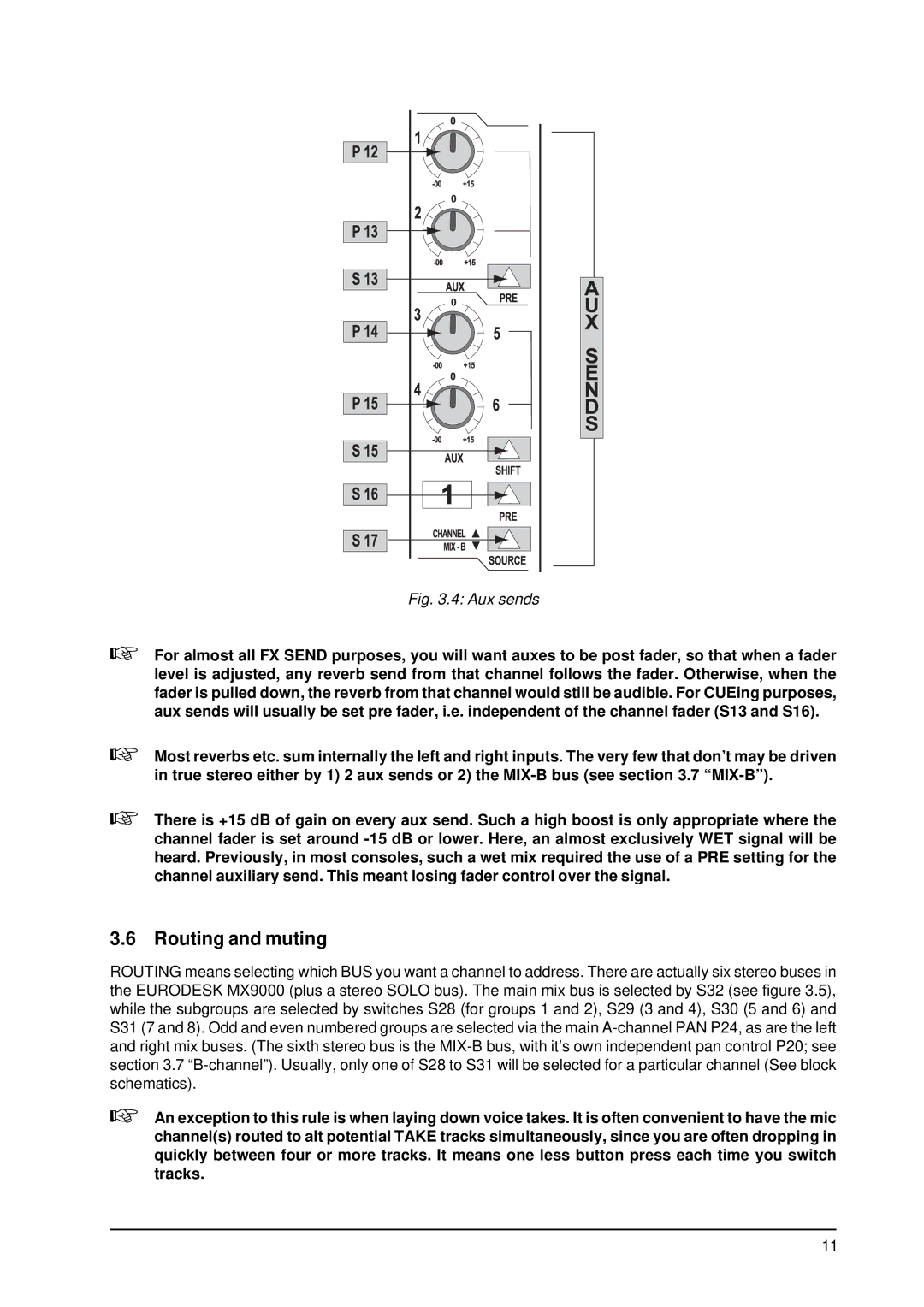
Fig. 3.4: Aux sends
+For almost all FX SEND purposes, you will want auxes to be post fader, so that when a fader level is adjusted, any reverb send from that channel follows the fader. Otherwise, when the fader is pulled down, the reverb from that channel would still be audible. For CUEing purposes, aux sends will usually be set pre fader, i.e. independent of the channel fader (S13 and S16).
+
+
Most reverbs etc. sum internally the left and right inputs. The very few that don’t may be driven in true stereo either by 1) 2 aux sends or 2) the
There is +15 dB of gain on every aux send. Such a high boost is only appropriate where the channel fader is set around
3.6 Routing and muting
ROUTING means selecting which BUS you want a channel to address. There are actually six stereo buses in the EURODESK MX9000 (plus a stereo SOLO bus). The main mix bus is selected by S32 (see figure 3.5), while the subgroups are selected by switches S28 (for groups 1 and 2), S29 (3 and 4), S30 (5 and 6) and S31 (7 and 8). Odd and even numbered groups are selected via the main
+An exception to this rule is when laying down voice takes. It is often convenient to have the mic channel(s) routed to alt potential TAKE tracks simultaneously, since you are often dropping in quickly between four or more tracks. It means one less button press each time you switch tracks.
11
